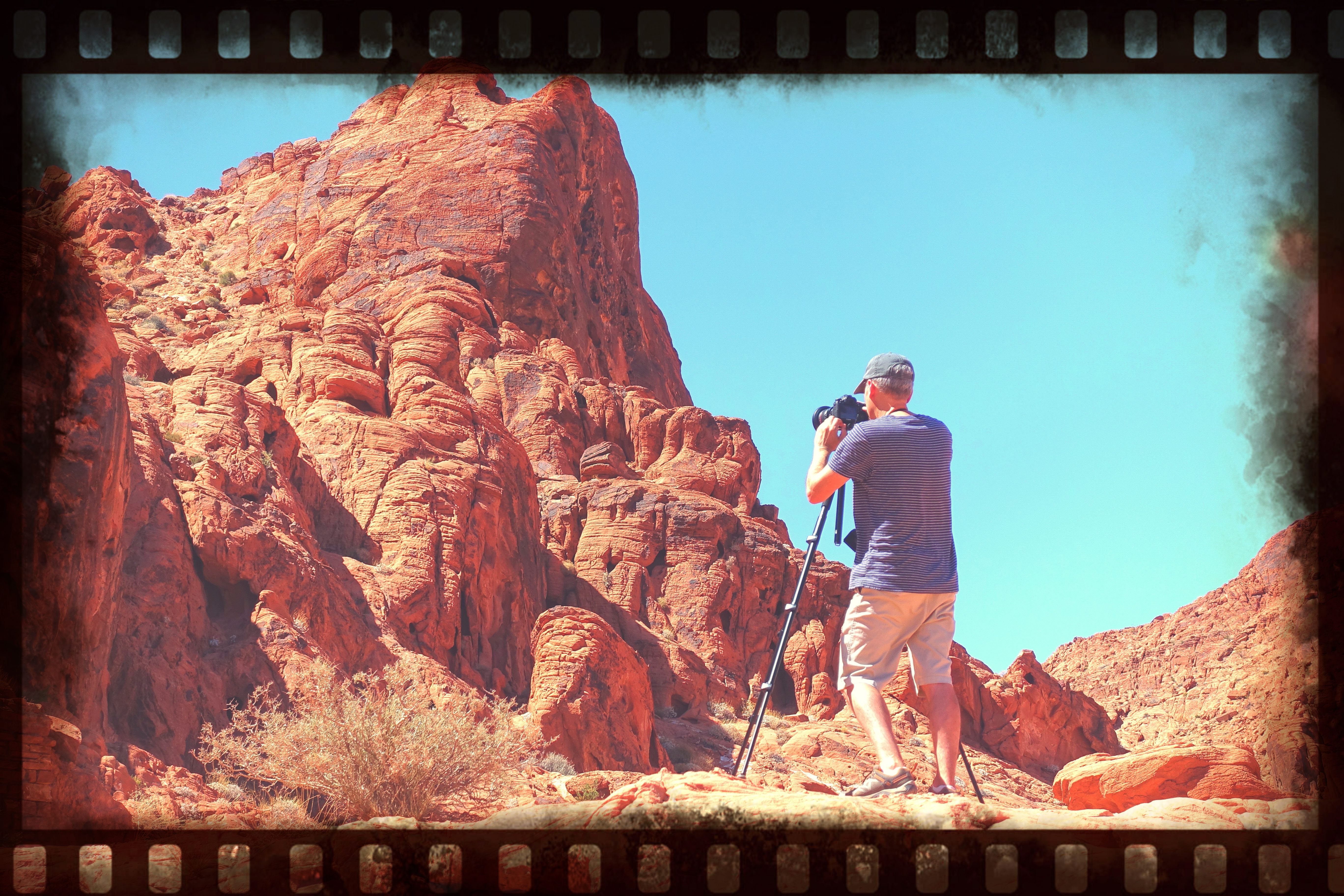We sit down to talk with fine art photographer Edward M. Fielding, back from the desert with a new set of fine art photographs from the American Southwest.
“Do these photographs make you feel warm?” jokes photographer.
“Do they make you feel a bit hot under the collar?” he laughs. “Do they make you feel thirsty?”
Fielding hands me an ice-cold craft beer out of the mini fridge outside his office as we look over his new portfolio of fine art photographs from American Southwest.
“I think every bar owner should consider installing a few of these photographs in their bar – beer sales will skyrocket!” he chuckles flipping through the prints of sun-baked, oxidized vintage cars in the desert.
“It was 115 degrees the morning I took these photos. Just think how hard it was for the owners of these cars and trucks to live under these conditions and put in a full day digging to rock in search of gold. The cars and buildings are still there but the people have mostly gone, and those who remain can only survive with modern air conditioning.”
Fielding shows a photo from his phone that shows a sign for a HEAT WARNING. The sign says “Hiking in hot weather is dangerous and not recommended. Please be smart and safe”.
We flip through the large scale photographs with sharp detail that brings out every inch of the weathered, rusty old vehicles. The paint isn’t worn off as much as it is oxidized by the sun. The unrelenting sun basically cooks the paint into vapor that blows away in the sand fill winds.
Rubber is particularly susceptible to decay in these conditions as evident by the tires that literally melt away, exposing the steel belts within.
Fielding takes a thoughtful sip of the vanilla porter and recounts the dangers of shooting in the remote desert under these conditions.
“There were factors to keep in mind during this shoot. Things you wouldn’t normally encounter on a photo shoot. You had to watch your step because this is rattlesnake area. At any point, you could put your foot down on a rattlesnake using a rock for shade. The local guide had four of them in the freezer back at the old miner house.”
“Then there was the “Teddy Bear”, doesn’t that sound harmless? — cholla cactus that was all over the place. Back your butt into one of these suckers and it means a long wait for the ambulance to take you at least an hour to the hospital. These nasty things have barbed hooks that don’t let go, and they are designed to break off on anything that touches them.”
“Of course there was the danger of heat stroke or heat exhaustion. I had to pace myself. Wearing a broad hat, sunscreen, full length clothing. Under 115 degree heat one can only work out in the sun for about 20 minutes before being totally exhausted and having to seek shelter with plenty of cold beverages.”
“In this heat you don’t even sweat. It just sort of evaporates immediately” he says about photographing in 115 degree desert heat.
I ask Fielding how his equipment held up under these conditions.
“Well, I was using a Canon EOS 6D that I’ve used for a long time. It had been in freezing cold weather in New Hampshire, Vermont and even Iceland. It worked for me in the pouring rain. It has worked after being in hot car in the summertime. It’s a solid, weather-sealed Canon camera made for abuse, so it worked. At least the battery life wasn’t affected like it is in the cold. But it did get too hot to touch after a while!”
“The problem is camera equipment is all black.” explained Fielding, “I had the Canon EOS 24mm Tilt-shift, my trusty Canon EOS 35 mm f/2 and a Canon EOS 24-70 f/4 as I wanted to try various angles – I wasn’t planning to come back any time soon so I wanted to capture all I could. But the black plastic on this stuff got so hot it was likely to burn your fingers!”
“I wasn’t fiddling around pointing and shooting. I was looking to capture well thought out compositions so I first went around the location with the 35mm handheld to get an idea of some compositions and then went back with the 24mm Tilt-shift and a sturdy tripod.”
“The Canon 24 millimeter Tilt-shift the tripod gave me the ability to shoot seven exposure HDR images and combine them later like with this shot of the old gas station.”
“I also was able to use the shift function to create highly detailed panoramic like this one of the old International Harvester Metro Van.
It took three overlapping shots at close range to get this final image which shows every inch of the weathered old car especially when printed to it’s max at 48 x 48 inches.”
Fielding’s photographs from the American Southwest can be found at https://edward-fielding.pixels.com/art/southwest
